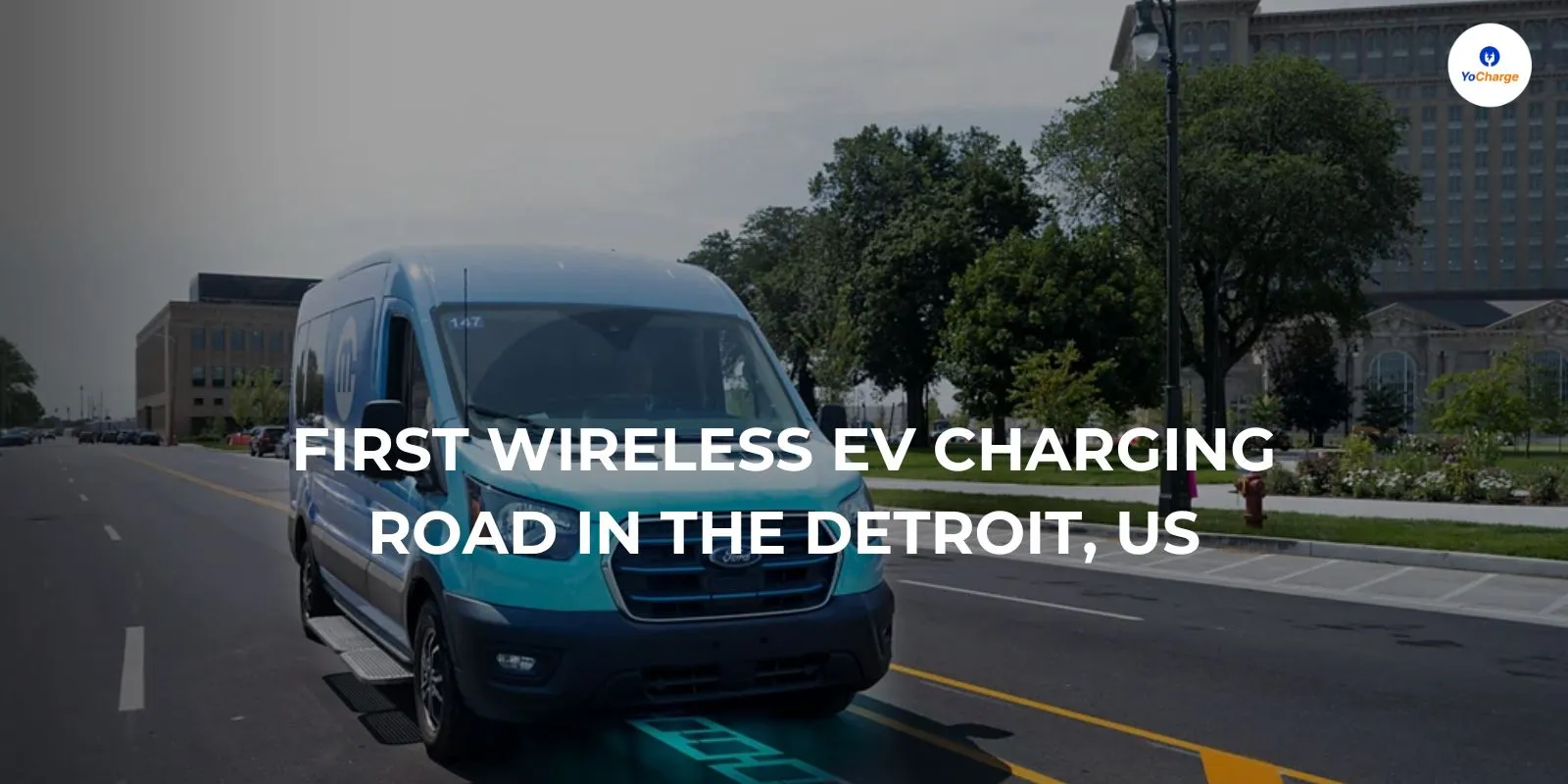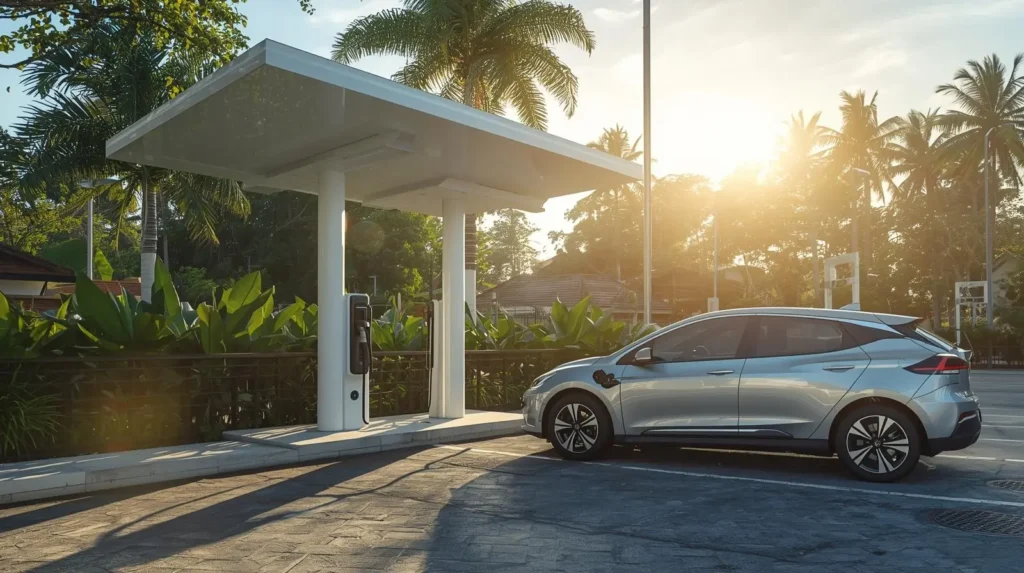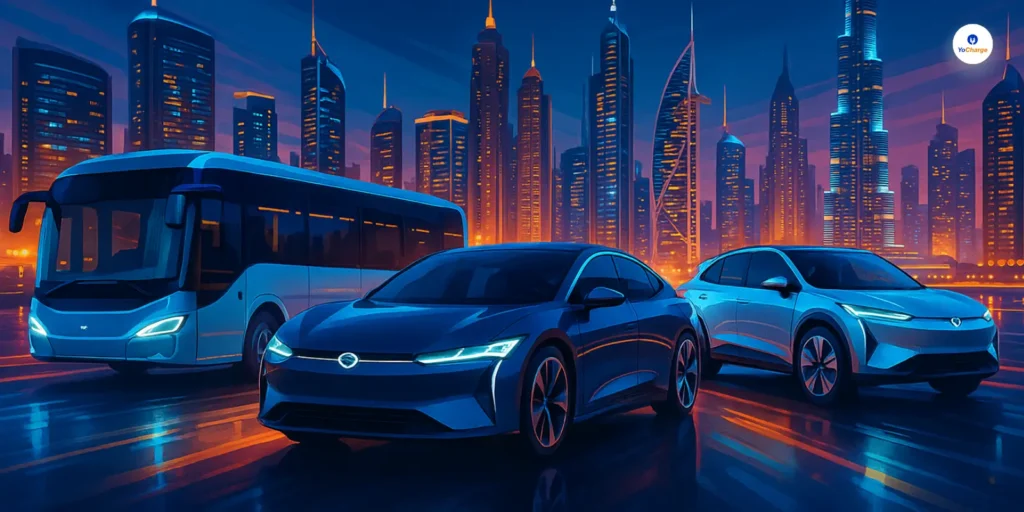
First Wireless EV Charging Road in Detroit: Imagine driving along a road that charges your electric vehicle as you go. No stopping, no waiting…just charging on the move.
This vision is now a reality with the world’s first Wireless EV Charging Road in Detroit, Michigan. This technology is addressing one of the biggest concerns for EV owners: range anxiety.
Wireless EV charging is leading the way for a greener and more connected future. Whether you are a commuter or a fleet operator, this innovation could reshape how we think about driving, charging, and sustainability.
What is a Wireless EV Charging Road?
A Wireless Charging Road is a stretch of road embedded with electromagnetic coils that transfer energy wirelessly to EVs. The process, known as inductive charging, creates an electromagnetic field above the road’s surface.
A receiver installed in an EV’s battery captures this energy, allowing the vehicle to charge without stopping.
The first public Wireless EV Charging Road in the United States was installed in Detroit. This pilot project demonstrates how dynamic charging can solve range anxiety by enabling vehicles to gain charge while driving.
The Detroit Pilot: A Step Forward
In Detroit’s Corktown neighborhood, a quarter-mile section of Wireless EV Charging Road has been integrated into 14th Street. Funded by $1.9 million from the Michigan Department of Transportation and contributions from Electreon.
Electreon installed magnetic inductive coils under the asphalt and connected them to the city’s power grid. EVs equipped with compatible receivers can charge dynamically as they drive.
The project aims to expand this stretch to a full mile over the next few years, aligning with Michigan’s goal of achieving carbon neutrality by 2050.
How Does Wireless EV Charging Road Work?
The Wireless EV Charging Road uses inductive charging technology, similar to wireless mobile phone chargers.
- Electromagnetic Coils: Embedded beneath the road, these coils generate an electromagnetic field.
- Vehicle Receiver: The EV’s receiver captures this energy and converts it to charge the battery.
- Dynamic Charging: This allows EVs to charge while moving, eliminating the need for plug-in charging stops.
This seamless process could drastically reduce downtime for commercial fleets and enhance EV efficiency.
Also Read: Norway’s Wireless EV Charging Roads
Benefits of Wireless EV Charging Road
There are multiple benefits of wireless EV charging roads including:
Reduces Range Anxiety
Range anxiety discourages many drivers from switching to EVs. A Wireless Charging Road eliminates this concern by continuously charging vehicles during travel.
Supports Sustainability Goals
Wireless charging roads help reduce carbon emissions by extending EV range and encouraging more people to transition to electric vehicles.
Efficient for Commercial Fleets
Commercial vehicles, like buses and trucks, can benefit significantly. These fleets often follow fixed routes, making it easier to integrate Wireless EV Charging Roads strategically.
Minimizes Charging Stops
Drivers no longer need to stop and plug in their vehicles, saving time and improving overall convenience.
Encourages Smaller Batteries
With wireless charging roads, automakers can design EVs with smaller batteries, reducing costs and making EVs more affordable.
Challenges in Implementation of Wireless EV Charging Road
Despite its promise, implementing a Wireless EV Charging Road comes with challenges:
High Initial Costs
Currently, it costs nearly $2 million per mile to install a Wireless EV Charging Road. Experts believe this cost will drop as the technology matures.
Scalability Concerns
Extending wireless charging roads across entire cities or highways would be expensive and logistically complex.
Vehicle Compatibility
Only EVs with compatible receivers can benefit from wireless charging roads. Retrofitting existing EVs may require additional investment.
Energy Demand
Adding wireless charging roads to the power grid could increase energy demand, requiring enhanced infrastructure to handle the load.
Global Innovations and Initiatives
The United States is not alone in exploring Wireless EV Charging Roads. Countries worldwide are piloting similar projects to improve EV adoption:
- Sweden: Plans to build 1,200 miles of electric roads, costing approximately $3 billion.
- Germany: Focuses on electrifying portions of its Autobahn with overhead cables or inductive charging.
- France: Aims to construct 5,500 miles of electrified roads by 2035.
Electreon has also launched projects in Israel, Germany, and the U.S., including partnerships with transit operators to electrify busy routes.
Cost-Effective Solutions for Wireless EV Charging Road
To address cost concerns, companies like Electreon offer innovative payment models:
- Charging-as-a-Service (CaaS): Fleet operators can pay a monthly fee for continuous charging.
- Pay-As-You-Go: Casual users can pay for charging based on usage.
These models could make the Wireless Charging Road more accessible and affordable for diverse users.
Also Read: Tata Nexon EV Charging Cost & Charging Options
Will Wireless EV Charging Road Become Mainstream?
While challenges remain, the potential of Wireless EV Charging Roads is undeniable. They can reduce range anxiety, support environmental goals, and revolutionize EV infrastructure.
Experts believe these roads will first become widespread in areas with high commercial traffic, such as transit corridors and urban hubs.
As costs decline and technology advances, we may see Wireless EV Charging Roads become an integral part of transportation networks globally.



